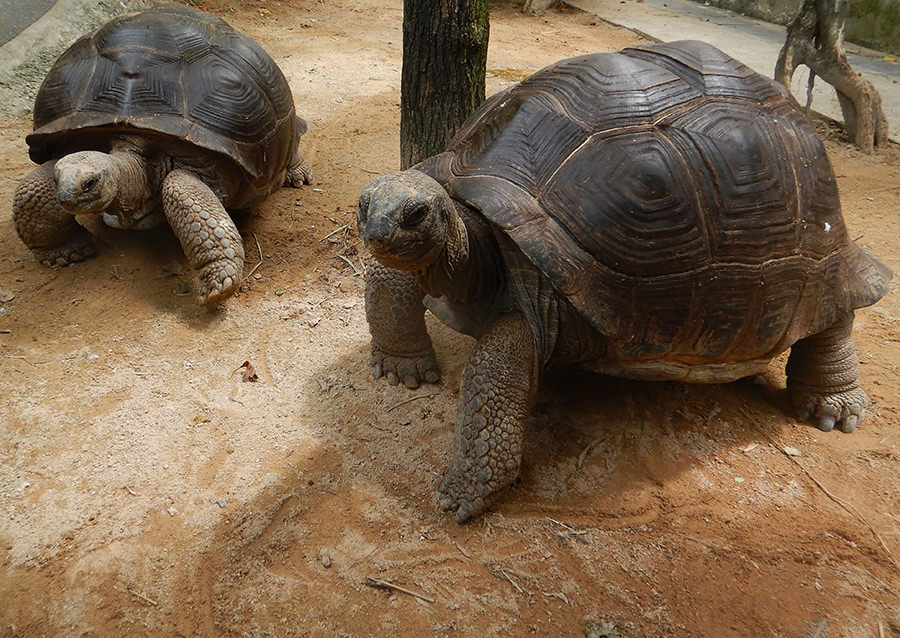Giant Tortoise
Plastic Pollution
The main population of the Aldabra giant tortoise, currently listed as Vulnerable on the IUCN Red List of Threatened Species, resides on the islands of the Aldabra Atoll in the Seychelles, Africa. The atoll is home to some 100,000 giant tortoises. However, negative impacts on our environment are predicted to result in an overall population decline of 40-65% over the next 100 years, rendering the species endangered. Although Aldabra is fairly remote – 265 miles from the nearest shore, large amount of plastic debris has been carried by wind and accumulated along the shore of the atoll. Giant tortoises are often seen having "plastic feasts".
On the other hand, thousands of animals, from small finches to blue whales, die grisly deaths from eating and getting caught in plastic. Tragically, research indicates that not only half of sea turtles worldwide have ingested plastic, hundreds and thousands of seabirds also ingest plastic every year. Marine mammals have also become victims – either being found with bellies full of plastic or tangled up in plastic.
Plastics take hundreds of years to decompose, and as they do, they break into micro-plastics. Micro-plastics then make their way up the food chain, harming wildlife and eventually on our plates. We are committed to beating plastic pollution. Be a Conservation Hero and support us in promoting "plastic-free".

